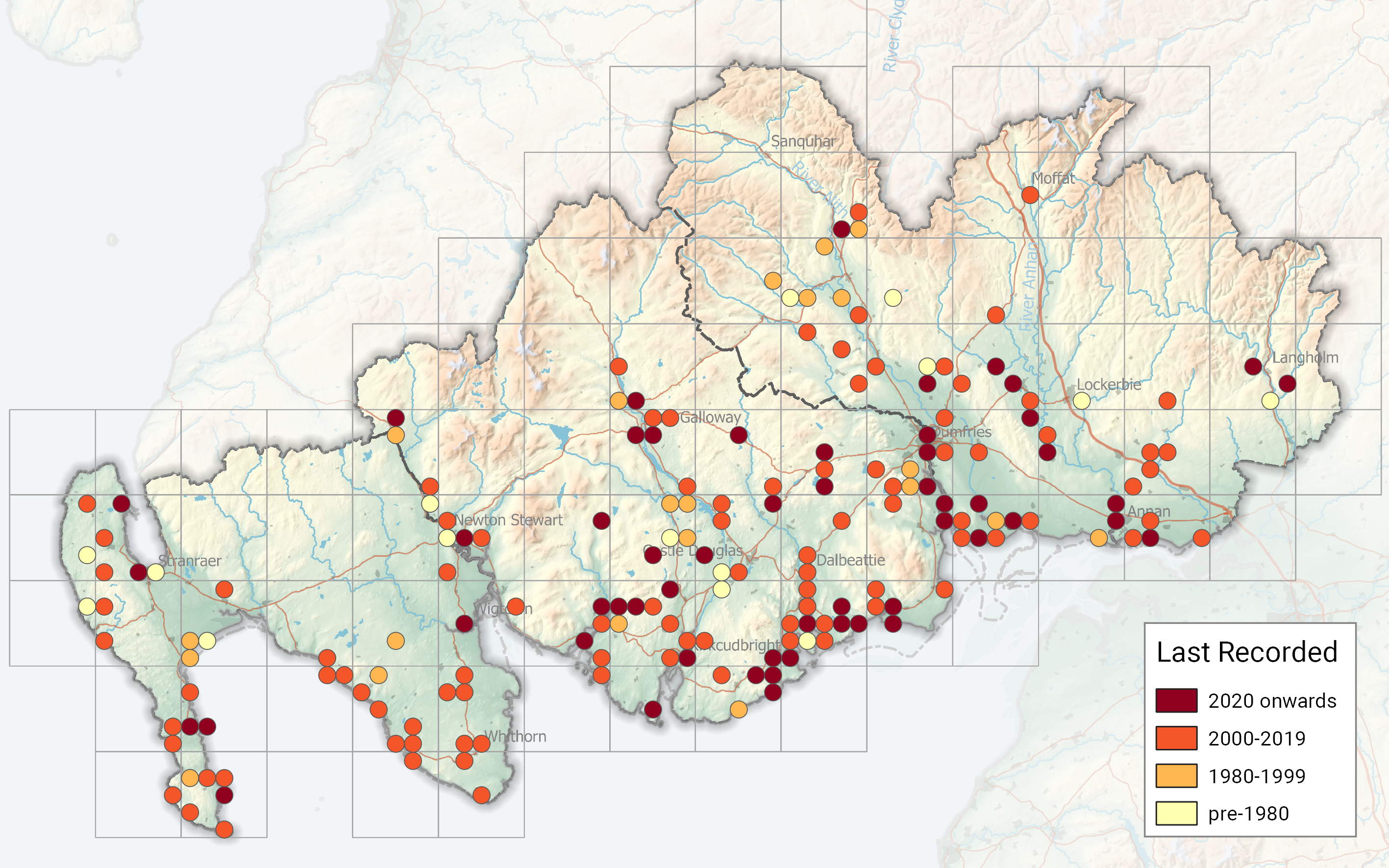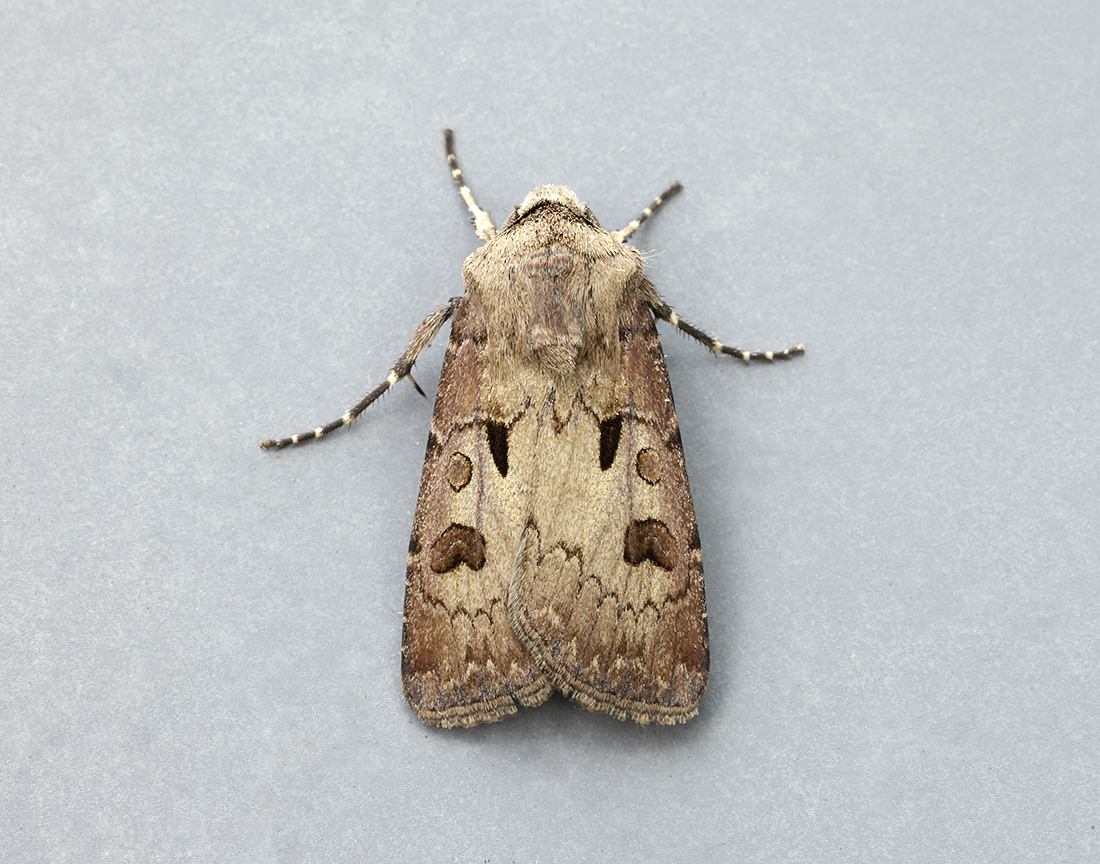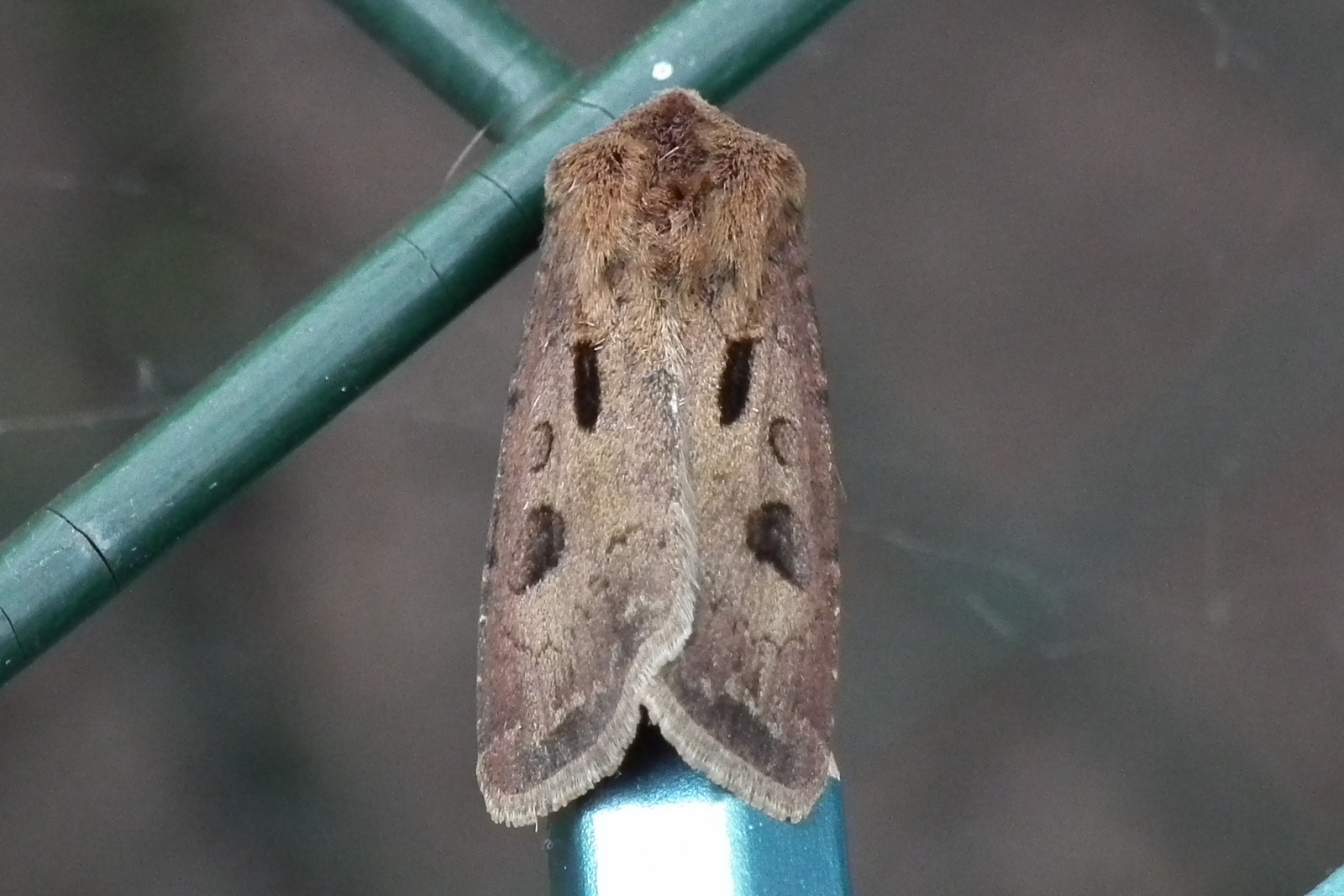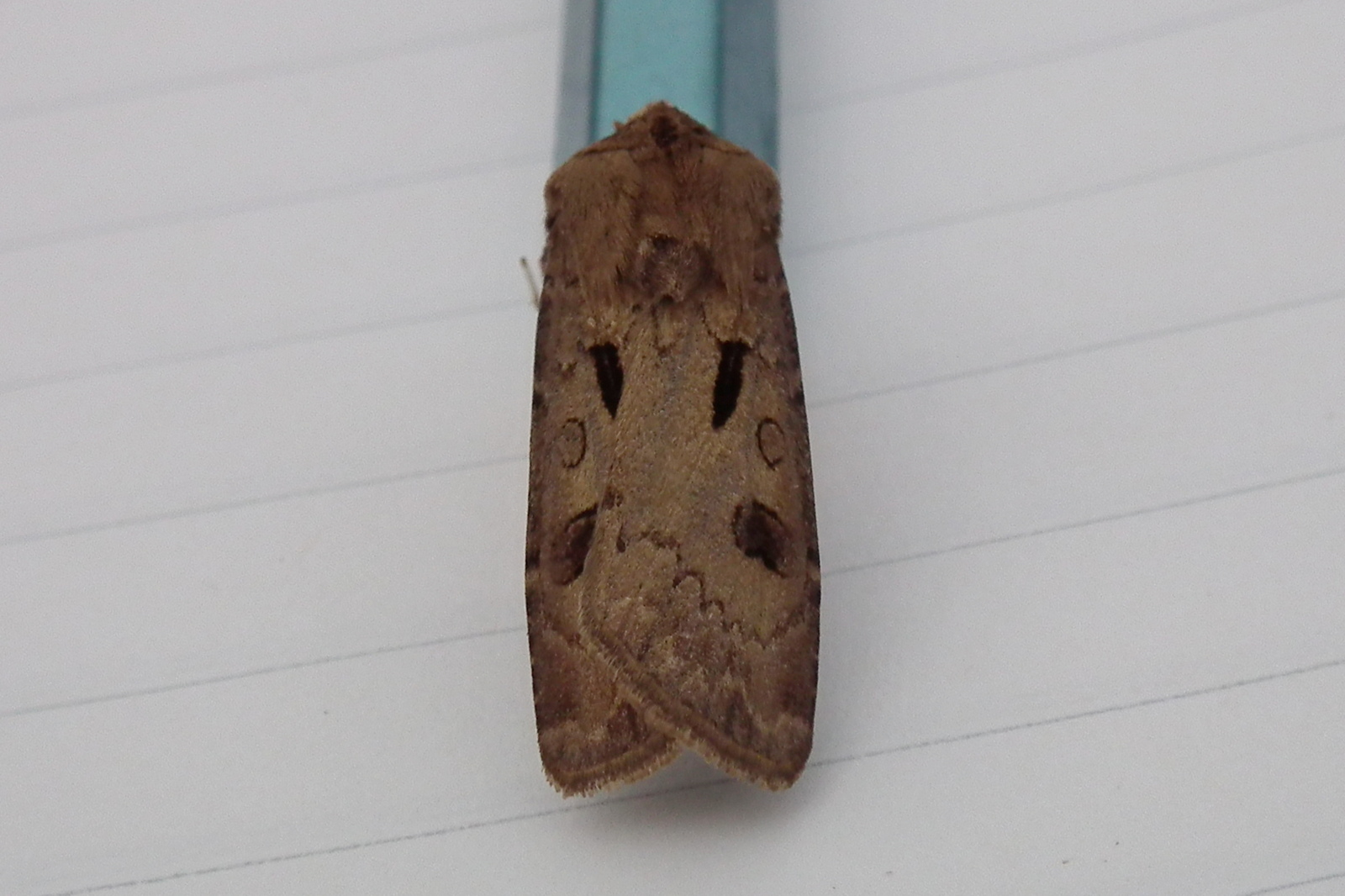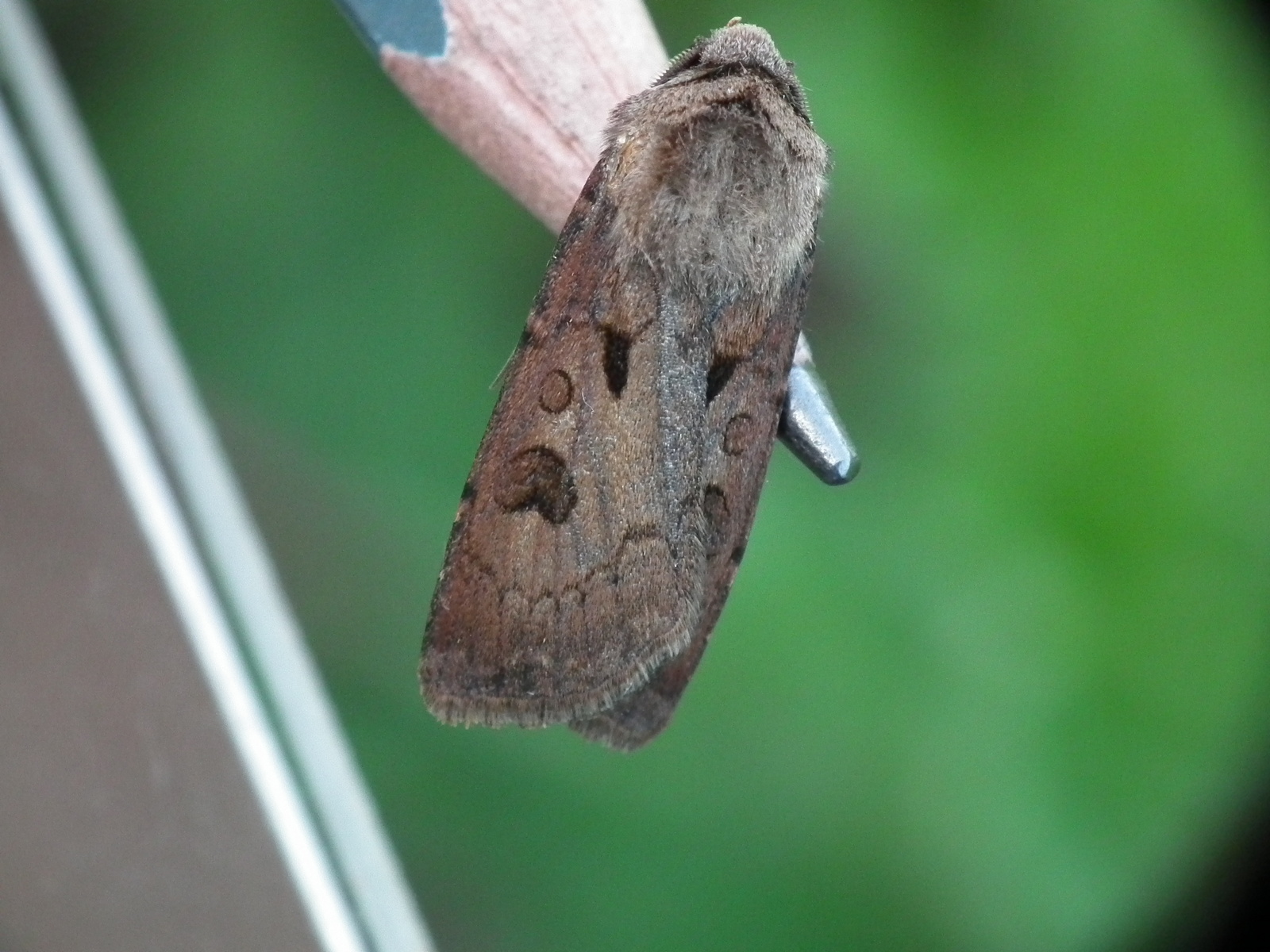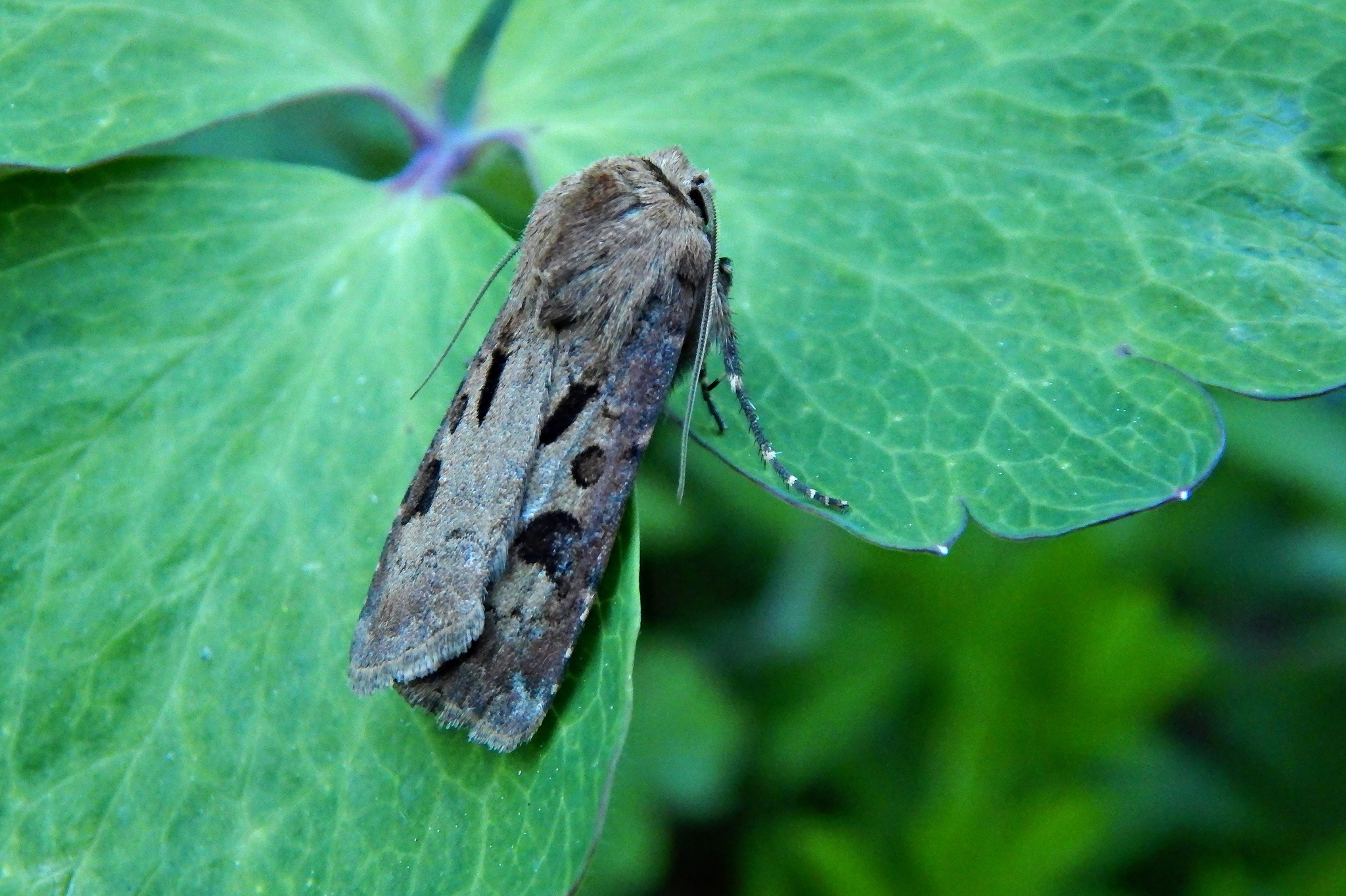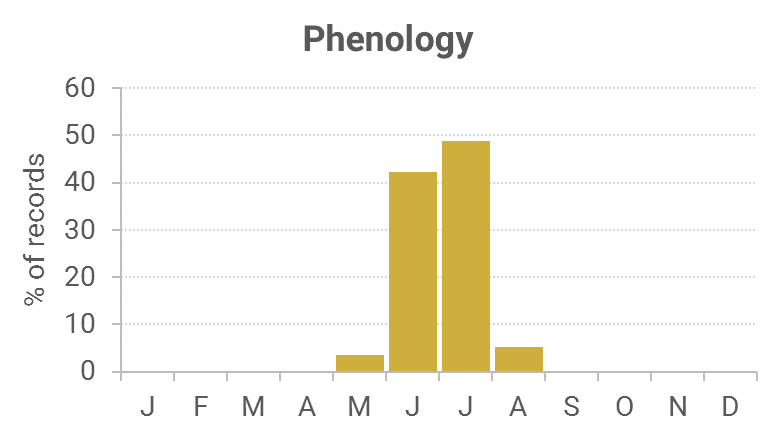Identification
The blackish mark across the collar on the head is diagnostic.
Recording Method.
Attracted to light, also comes to sugar and flowers.
Life cycle
Two generations with overlapping. Overwinters as a fully grown larva, July to spring, underground in a cell from where it pupates.
Larval foodplants
A wide variety of herbaceous plants.
Habitat
Common in a wide range of habitats.
History
Lennon (1863) found it was common around the Dumfries area. Douglas Robinson (1870-71) found it swarming all summer at sugar on Almorness (VC73). There were one or two almost black varieties. K. J. Morton of Edinburgh (1900) whilst on a visit in July 1899 to Wigtownshire had found this species in the Monreith area. Gordon (1913) stated it to be generally distributed in Wigtownshire, often abundant during June. Earliest date was 12th June 1897.
Sir Arthur Duncan (1909-84) during his lifetime had found it at Closeburn, Tynron and Castlehill, Dumfries (all VC72). Archibald Russell (1944) listed it as occurring near Gatehouse of Fleet (VC73) during the years 1942-43.
A series of records came from Irvine House Lodge, Auchenrivock in 1974, while T. H. Ford found it at Sandyills, with Pelham-Clinton recording it from Caulkerbush and Kirkbean. During 1974-93 all seven of the Rothamsted stations amassed nearly 400 records. The regular trapped sites at Kirkton and Mersehead RSPB provided a good quantity of records during the next period of 1993-2010, with a wide scattering of other records from various sites across the region, proving it to be one of our commonest noctuids.

